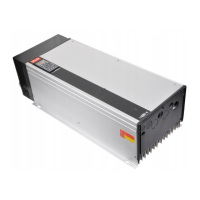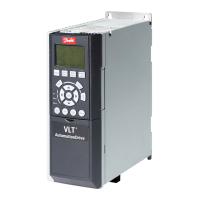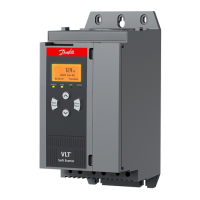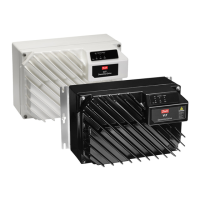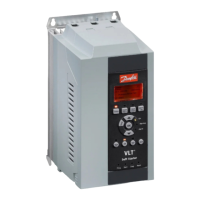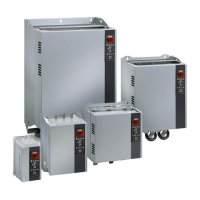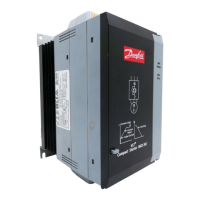Derating of output current versus altitude at T
AMB, MAX
for frame sizes D, E and F.
8.6.5 Derating for running at low speed
When a motor is connected to a frequency converter, it is necessary to check that the cooling of the motor is adequate.
The level of heating depends on the load on the motor, as well as the operating speed and time.
Constant torque applications (CT mode)
A problem may occur at low RPM values in constant torque applications. In a constant torque application s a motor may over-heat at low speeds due to
less cooling air from the motor integral fan.
Therefore, if the motor is to be run continuously at an RPM value lower than half of the rated value, the motor must be supplied with additional air-cooling
(or a motor designed for this type of operation may be used).
An alternative is to reduce the load level of the motor by choosing a larger motor. However, the design of the frequency converter puts a limit to the
motor size.
Variable (Quadratic) torque applications (VT)
In VT applications such as centrifugal pumps and fans, where the torque is proportional to the square of the speed and the power is proportional to the
cube of the speed, there is no need for additional cooling or de-rating of the motor.
In the graphs shown below, the typical VT curve is below the maximum torque with de-rating and maximum torque with forced cooling at all speeds.
Maximum load for a standard motor at 40 °C driven by a frequency converter type VLT FCxxx
Legend: ─ ─ ─ ─Typical torque at VT load ─•─•─•─Max torque with forced cooling ‒‒‒‒‒Max torque
Note 1) Over-syncronous speed operation will result in the available motor torque decreasing inversely proportional with the increase in speed. This
must be considered during the design phase to avoid over-loading of the motor.
8 General Specifications and Troubleshooting VLT
®
HVAC Drive Design Guide
180
MG.11.B9.02 - VLT
®
is a registered Danfoss trademark
8

